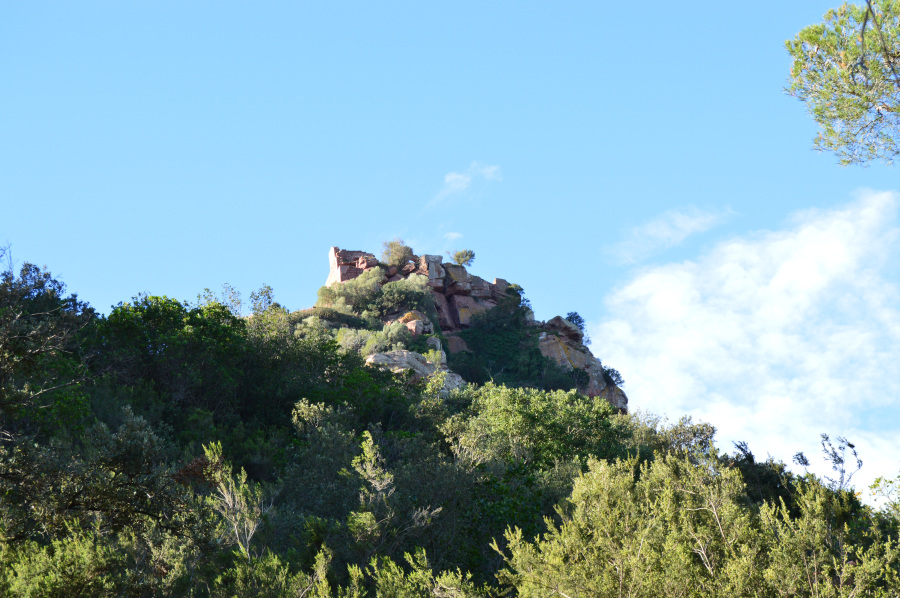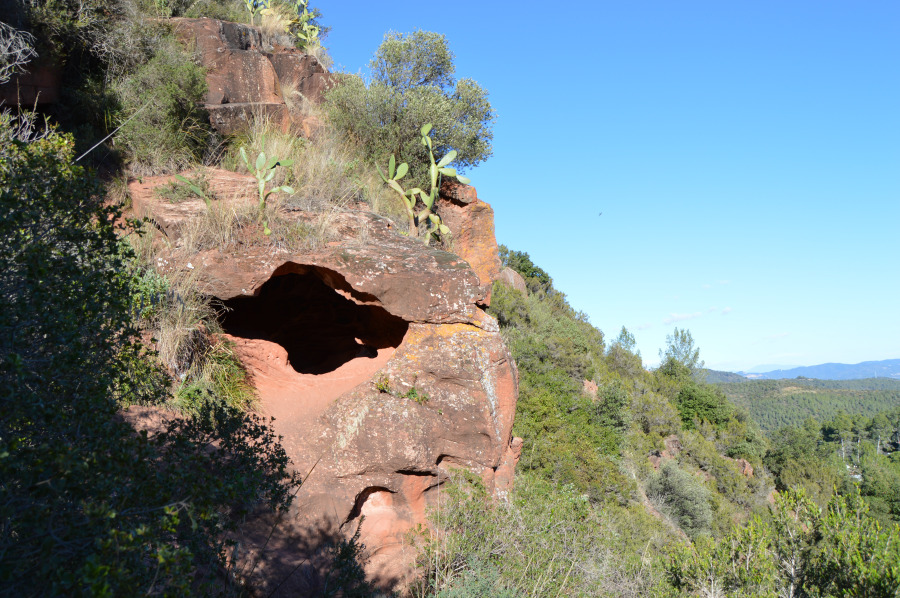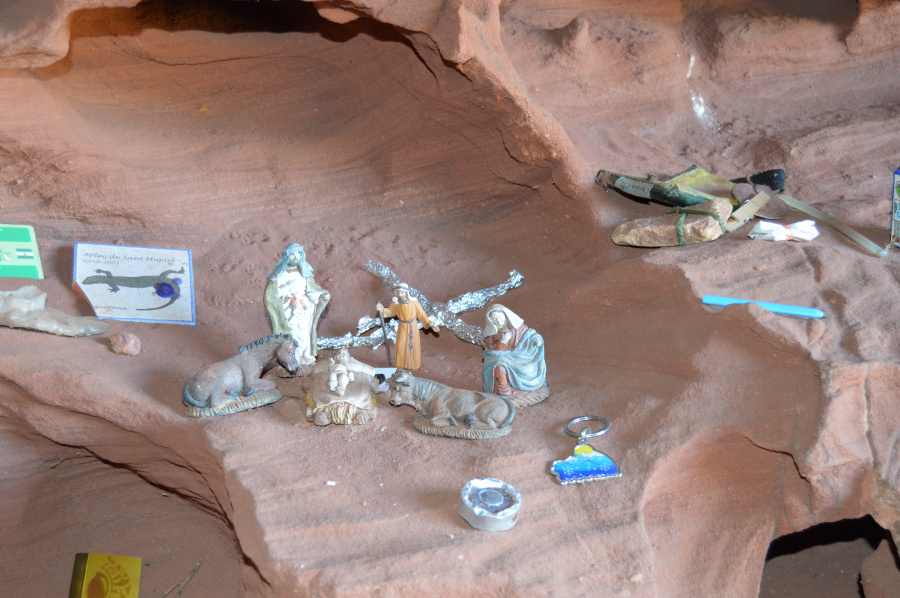Close to Gavà you can find a stunning hiking trail perfect for a half day excursion. The trail starts at the Ermita de Bruguers (a 5 minutes car ride from Gavà: about 4 km northwest of the town’s center), a Roman chapel from the 13th century, also called Santa Maria de Bruguers. There are a couple of typical Catalan restaurants next to the Ermita, perfect to start or finish your hike with a cold beer and amazing views over Garraf Natural Park, Gavà, Barcelona, Castelldefels and the Mediterranean Sea.
Our hiking trail leads up to the ruins of a fortress Castel d’Eramprunyà.
The trail is a bit rough but views throughout the path are absolutely amazing. On the way up, you will see and can enter caves, you’ll come by the Roca Foradada (kind of a half-moon-rock formation) and you will encounter exotic vegetation.
Castel d’Eramprunyà is located 438 meter above sea level overlooking the Garraf Natural Park and it has first been documented in 957. Unfortunately, if you go on your own, you won’t be able to enter the fortress ‘legally’.
If you don’t dare to enter the fortress through one of the holes in the fence that surround it, you can still visit the ruins. The Ajuntament de Gavà (the town hall) organizes free guided hikes every second Sunday parting from the Ermita at 10 a.m. If you wish to do that you will need to call the town hall beforehand to sign up for it. The hike takes only about two to three hours, however, good hiking shoes are required.
Looking down from the fortress towards the Mediterranean Sea you’ll be able to spot a cross and a cave underneath it. You can stop by there on your way down. The path from the fortress to the cave leads through abundant vegetation and by some more ruins.
From the cross you’ll have an excellent view at the fortress and its surroundings.
The way down from the cross to the cave is very steep and you’ll have to do some climbing. There is a steel cable that leads from the platform down the rocks and up again into the cave. The cave is full of strange stuff people left there (condoms, notes, figures of saints and angels, candles, etc.). As written on a wooden board, the cave’s name is Cova de la Mare de Dèu de Bruguers.



















 My name is Carmen and I love to travel and explore new places. I love animals and that is why I don’t eat them. I defend the idea that animals are entitled to the possession of their own lives and that their most basic interests should be afforded the same consideration as similar interests of human beings!
My name is Carmen and I love to travel and explore new places. I love animals and that is why I don’t eat them. I defend the idea that animals are entitled to the possession of their own lives and that their most basic interests should be afforded the same consideration as similar interests of human beings!





